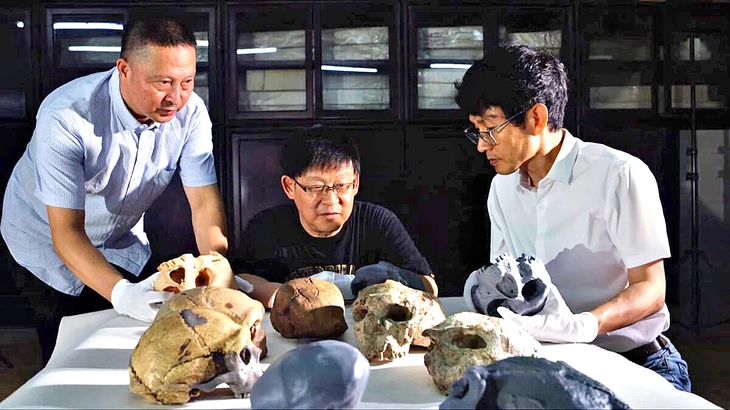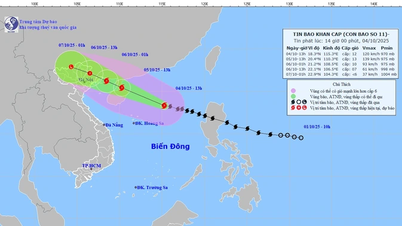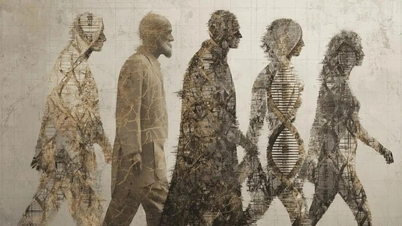
Researchers are comparing and analyzing the Yunxian 2 skull - Photo: Guanghui Zhao
According to research published in the journal Science on October 1, through digital reconstruction of an ancient human skull in China, scientists believe that human evolution may have branched out 400,000 years earlier than previously hypothesized, and likely took place in Asia instead of Africa.
The specimen, dubbed Yunxian 2, was discovered in 1990 in China and was previously thought to belong to the species Homo erectus . Using CT scanning and 3D reconstruction technology, the international team of researchers reconstructed the skull's original shape and found that it bears similarities to Homo erectus , as well as similarities to Homo longi (also known as "Dragon Man") and Homo sapiens .
Professor Chris Stringer from the Natural History Museum in London (UK) said this result shows that about 1 million years ago, human ancestors split into many different branches, much more complex than the previously popular single-line evolutionary view.
The research is also expected to contribute to decoding the controversial evolutionary period from 1 million to 300,000 years ago.
However, many independent experts expressed skepticism about this result. Professor Michael Petraglia, Director of the Center for Human Evolution Research at Griffith University (Australia), said this discovery is full of potential and shows that East Asia could play an important role in human history.
Meanwhile, some archaeologists warn that skull morphology analysis cannot replace genetic evidence in accurately determining evolutionary branches.
Scientists emphasize that the research results are not conclusive but contribute to adding an important piece to the still mysterious picture of human origin and evolution.
Source: https://tuoitre.vn/phat-hien-moi-ve-loai-nguoi-lich-su-tien-hoa-phai-viet-lai-20251002130737336.htm



![[Photo] Solemn opening of the 8th Congress of the Central Public Security Party Committee, term 2025-2030](https://vphoto.vietnam.vn/thumb/1200x675/vietnam/resource/IMAGE/2025/10/4/f3b00fb779f44979809441a4dac5c7df)


![[Photo] General Secretary To Lam attends the 8th Congress of the Central Public Security Party Committee](https://vphoto.vietnam.vn/thumb/1200x675/vietnam/resource/IMAGE/2025/10/4/79fadf490f674dc483794f2d955f6045)
![[Photo] Bustling Mid-Autumn Festival at the Museum of Ethnology](https://vphoto.vietnam.vn/thumb/1200x675/vietnam/resource/IMAGE/2025/10/4/da8d5927734d4ca58e3eced14bc435a3)






















































![[VIDEO] Summary of Petrovietnam's 50th Anniversary Ceremony](https://vphoto.vietnam.vn/thumb/402x226/vietnam/resource/IMAGE/2025/10/4/abe133bdb8114793a16d4fe3e5bd0f12)
![[VIDEO] GENERAL SECRETARY TO LAM AWARDS PETROVIETNAM 8 GOLDEN WORDS: "PIONEER - EXCELLENT - SUSTAINABLE - GLOBAL"](https://vphoto.vietnam.vn/thumb/402x226/vietnam/resource/IMAGE/2025/7/23/c2fdb48863e846cfa9fb8e6ea9cf44e7)































Comment (0)